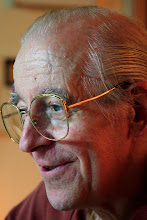Gresham’s Law, which says bad money drives out good money, was in fact named incorrectly. In a 1559 memorandum to Queen Elizabeth I (1533-1603, r.1558-1603), the English merchant and financier Sir Thomas Gresham (1519-1579), only pointed out that as the quality of English coins worsened, they would fetch a lower price in currency markets while good gold coins would flow out of England. While Gresham’s Law generally applies to the domestic circulation of money, Gresham also observed the phenomenon in foreign trade.
The theory should have been named Copernicus’s Law. Famous for his heliocentric theory, the Polish astronomer Nicolaus Copernicus (1473-1543) also wrote about economics. In his Essay on the Coinage of Money in 1517, he argued that when good and bad coins circulated together, metal smiths would pick out the quality coins, melt them down, extract the silver and sell it. He claimed that bad coins were circulated in order to drive out the good coins.
Sweden faithfully followed the theory of Copernicus. Using its abundant copper reserves, Sweden made coins out of copper instead of gold or silver. However, as the face value of the coin had to correspond to the actual value of the metal, the copper coins were very heavy. When the copper coinage was first introduced in Sweden during the rule of Queen Christina (1626-1689, r.1632-1654) a 10 taller coin weighed 19.75 kg! The rich had to store money in the basement in order to prevent the house from collapsing.
The gold standard, which had been widely enforced before World War I (1915-1918), was based on the premise that the actual value of the metal used for a coin was the same as the nominal value of the money. What bolstered the gold standard was the freedom to mint coins and to make bullion. When the value of the gold in a gold coin fell below the face value of the coin, people with raw gold had the right to demand the central bank to make their gold into coins. If the price of gold in a gold coin exceeded the face value of the coin, the holder of the coin had the right to melt the coin into an ingot. That way, the value of gold coins and gold bullion could be kept in balance.
The theory should have been named Copernicus’s Law. Famous for his heliocentric theory, the Polish astronomer Nicolaus Copernicus (1473-1543) also wrote about economics. In his Essay on the Coinage of Money in 1517, he argued that when good and bad coins circulated together, metal smiths would pick out the quality coins, melt them down, extract the silver and sell it. He claimed that bad coins were circulated in order to drive out the good coins.
Sweden faithfully followed the theory of Copernicus. Using its abundant copper reserves, Sweden made coins out of copper instead of gold or silver. However, as the face value of the coin had to correspond to the actual value of the metal, the copper coins were very heavy. When the copper coinage was first introduced in Sweden during the rule of Queen Christina (1626-1689, r.1632-1654) a 10 taller coin weighed 19.75 kg! The rich had to store money in the basement in order to prevent the house from collapsing.
The gold standard, which had been widely enforced before World War I (1915-1918), was based on the premise that the actual value of the metal used for a coin was the same as the nominal value of the money. What bolstered the gold standard was the freedom to mint coins and to make bullion. When the value of the gold in a gold coin fell below the face value of the coin, people with raw gold had the right to demand the central bank to make their gold into coins. If the price of gold in a gold coin exceeded the face value of the coin, the holder of the coin had the right to melt the coin into an ingot. That way, the value of gold coins and gold bullion could be kept in balance.


1983. Diameter 22.86 mm, brass (65 % copper, 35 % zinc)


2006. Diameter 18 mm, plated copper (48 % copper, 52 % aluminium)
In Korea, in 1983 was coined the 10 won (圓, 원) coin made up of copper and zinc (brass); today it is a very good coin. The value of the metal in the coin is higher than the coin’s face value. It is better to melt the coin and make some other product with the material. In 2006 the Bank of Korea (한국은행 Hanguk Unhaeng) made a new, smaller 10 won coin out of less expensive material.
The 10 won coin has long lost its utility as currency, but it seems the Bank of Korea wanted to please 10-won coin holders with this new model.
Giorgio Olivotto
Seoul, Korea
September 19, 2010

Nessun commento:
Posta un commento